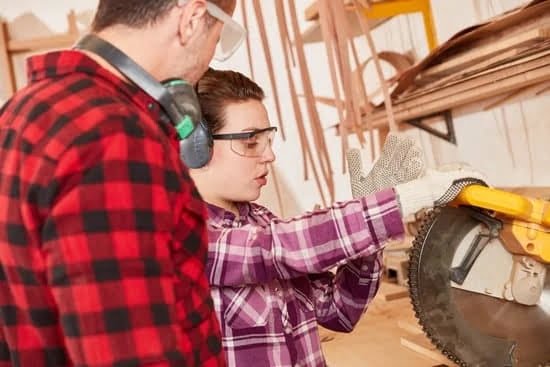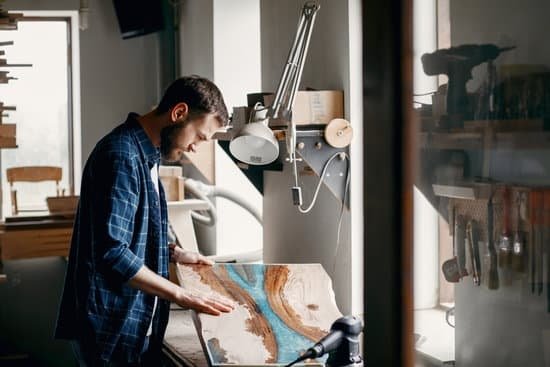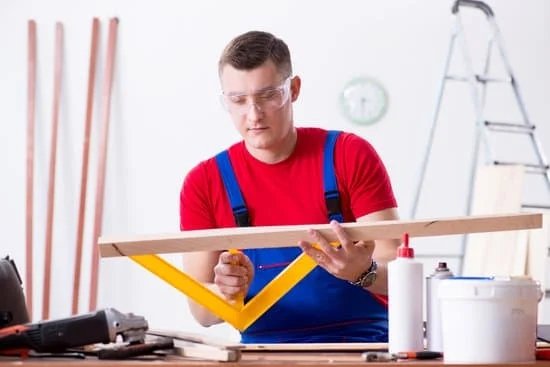Woodworking is a meticulous craft that requires careful planning and precise execution. Whether it’s building furniture, cabinetry, or decorative pieces, having a clear vision of the final product is crucial. This is where drawings come into play. In woodworking, two types of drawings are commonly used to guide craftsmen throughout the process: shop drawings and conceptual/design drawings.
Drawings serve as an indispensable tool in woodworking projects by providing a visual representation of the project’s specifications and requirements. They act as a blueprint for woodworkers, offering a comprehensive guide on measurements, materials, and construction methods. Without accurate and detailed drawings, there would be room for error and miscommunication among all parties involved.
The first type of drawing commonly used in woodworking is shop drawings. Shop drawings provide essential information regarding dimensions, joinery techniques, material sourcing, and step-by-step instructions for constructing the piece accurately. These drawings serve as a reference point for woodworkers during the fabrication phase. They ensure consistency in design and enable efficient use of time and resources.
Conceptual/design drawings constitute the second type of drawing employed in woodworking projects. Unlike shop drawings that focus primarily on technical aspects, conceptual/design drawings help woodworkers visualize the final product and experiment with various design options. These drawings showcase the artistic aspect of woodworking by capturing intricate details such as aesthetics, patterns, textures, and overall composition.
Basic Types of Drawings in Woodworking
Introduction: Understanding the Importance of Drawings in Woodworking
In woodworking, drawings play a crucial role in guiding craftsmen through each step of the construction process. These detailed plans serve as a blueprint, providing essential information on measurements, materials, and construction methods. By following these drawings, woodworkers can ensure accuracy, precision, and efficient execution of their projects. There are two main types of drawings commonly used in woodworking: shop drawings and conceptual/design drawings.
Detailed Explanation of Shop Drawings
Shop drawings are highly detailed and specific to each woodworking project. These drawings provide comprehensive information about measurements, materials, joinery techniques, and other technical specifications. They serve as a reference for woodworkers throughout the construction process, ensuring that every aspect is accurately executed.
Shop drawings are created by skilled draftsmen or designers who work closely with woodworkers to translate their ideas into precise visual representations. These drawings include scaled diagrams and renderings that depict multiple angles and views of the final product. Additionally, they specify the types and quantities of materials required for the project.
The Role of Shop Drawings in Woodworking Projects
Shop drawings play a critical role in efficiently planning and executing woodworking projects. By having a clear set of instructions to follow, woodworkers can minimize errors and prevent costly mistakes. These detailed plans help them in organizing their workflow, setting realistic timelines for completion, as well as identifying any potential design flaws or structural issues before beginning construction.
Furthermore, shop drawings enhance communication between woodworkers and clients. They allow clients to visualize how the final product will look and make any necessary changes or adjustments early on in the process. By collaborating closely with clients through shop drawings, woodworkers can ensure that expectations are met while delivering high-quality craftsmanship.
Benefits of Using Shop Drawings in Woodworking
The use of shop drawings offers several benefits to woodworkers by ensuring accuracy and precision throughout the construction process. Firstly, these detailed plans provide a clear understanding of what needs to be done, minimizing the chances of errors or misunderstandings. By having precise measurements and specifications, woodworkers can avoid wastage of materials and reduce costs.
Additionally, shop drawings save time by streamlining the workflow. They enable craftsmen to work more efficiently by providing step-by-step instructions and eliminating guesswork. Woodworkers can focus on their craftsmanship rather than spending time making decisions on dimensions or materials during the construction process.
Detailed Explanation of Shop Drawings
Shop drawings are an integral part of woodworking projects, providing craftsmen with detailed information and instructions for the construction process. These drawings serve as a comprehensive guide, showcasing precise measurements, materials, and construction methods required to bring a design to life. Let’s delve deeper into the significance of shop drawings in woodworking.
Shop drawings can be defined as highly detailed and technical drawings that provide specific instructions for fabricators and woodworkers. They go beyond simple sketches or conceptual designs and focus on conveying crucial information required for the construction phase. Shop drawings act as a bridge between the design concept and its physical manifestation, ensuring accuracy and precision in the execution.
One of the key aspects of shop drawings is that they provide detailed dimensions for every component of a woodworking project. This includes measurements for lengths, widths, heights, angles, and any other specifications necessary for achieving the desired outcome. The use of shop drawings ensures consistency throughout the project, enabling woodworkers to produce uniform pieces that fit together seamlessly.
Additionally, shop drawings outline the materials required for each component and provide information on joinery techniques, fasteners, finishes, and other relevant details. This level of specificity allows woodworkers to plan their work effectively, procure materials efficiently, and avoid costly mistakes during construction.
Utilizing accurate shop drawings in woodworking projects offers several advantages:
1. Enhanced Communication: By providing clear visual representations and detailed instructions, shop drawings facilitate better communication between woodworkers and clients or other professionals involved in the project. This minimizes misunderstandings or misinterpretations and ensures everyone is on the same page.
2. Efficiency: Shop drawings streamline the planning process by enabling woodworkers to visualize how different components will come together before starting construction. This reduces wasted effort by identifying potential issues or conflicts early on.
3. Cost Savings: The precision involved in creating shop drawings helps minimize material waste due to inaccurate measurements or poor planning. Additionally, having a well-defined blueprint allows for better time management, reducing labor costs and increasing overall project efficiency.
The Role of Shop Drawings in Woodworking Projects
Shop drawings play a crucial role in woodworking projects, serving as a bridge between the design phase and the actual construction process. These highly detailed and precise drawings provide essential information about measurements, materials, and construction methods, ensuring that the project is executed efficiently and accurately.
One of the primary functions of shop drawings in woodworking projects is to streamline the planning and execution processes. These drawings provide woodworkers with a clear and comprehensive guide on how to proceed with each step of the construction process. From dimensions and joinery details to material specifications and finishing techniques, shop drawings leave no room for ambiguity or confusion.
Moreover, shop drawings enhance communication between woodworkers and clients. They serve as a visual representation of the final product, which allows clients to have a better understanding of what they can expect. In turn, this helps minimize misunderstandings or discrepancies between client expectations and actual results. By providing clients with accurate depictions of the project’s design elements and construction methods, shop drawings improve transparency and build trust.
To maximize the benefits of using shop drawings in woodworking projects, it is crucial to ensure their accuracy and precision. Woodworkers should meticulously double-check all measurements, materials lists, and construction details before starting any work based on these drawings. This attention to detail helps eliminate costly mistakes during the construction process and saves both time and resources.
Benefits of Using Shop Drawings in Woodworking
Ensuring Accuracy and Precision
One of the major benefits of using shop drawings in woodworking is that they help ensure accuracy and precision in the construction process. Shop drawings provide detailed information about measurements, materials, and construction methods. By referring to these drawings, woodworkers can ensure that their work is precise and aligns with the intended design.
The measurements provided in shop drawings are crucial in ensuring that all components of a woodworking project fit together correctly. This is particularly important when working on complex projects or when multiple pieces need to be assembled. Without accurate measurements, woodworkers risk wasting time, energy, and resources on ill-fitting parts or structures that do not meet the desired specifications.
In addition to measurements, shop drawings also outline the specific materials needed for each part of the project. This helps woodworkers make informed choices about which materials to use and ensures consistency throughout the construction process. By following these specifications, woodworkers can create sturdy and durable pieces that meet or exceed client expectations.
Time and Cost Savings
Another significant benefit of using shop drawings is the potential for time and cost savings. Woodworking projects often require careful planning and coordination between different stages of production. With accurate shop drawings, woodworkers can streamline their workflow by having a clear roadmap to follow.
By visualizing the project through shop drawings, woodworkers can identify any potential issues or conflicts before they arise during construction. This allows them to make necessary adjustments or changes without wasting additional time or resources. The ability to anticipate problems reduces rework, minimizes material waste, and ultimately saves costs associated with errors or mistakes made during construction.
Furthermore, precise shop drawings enable woodworkers to estimate project costs more accurately. By carefully examining the details in the drawings-such as quantities of materials required-woodworkers can generate more reliable cost estimates for clients. This promotes transparency in pricing discussions while also ensuring profitability for woodworking businesses.
Introduction to Conceptual/Design Drawings
In addition to shop drawings, another type of drawing commonly used in woodworking projects is conceptual/design drawings. While shop drawings focus on the technical aspects and construction details, conceptual/design drawings play a crucial role in visualizing the final product and exploring design options. These drawings help woodworkers bring their creative ideas to life and aid in the overall artistic aspect of woodworking.
Conceptual/design drawings differ from shop drawings in terms of their purpose and level of detail. Unlike shop drawings, which provide specific measurements and construction methods, conceptual/design drawings are more focused on capturing the overall aesthetic and design elements of a project. They serve as a visual representation of the woodworker’s vision for the final product, allowing them to brainstorm ideas and refine their designs.
For woodworkers, conceptual/design drawings are an integral part of the creative process. These drawings enable them to experiment with different design concepts, shapes, and proportions before committing to a final plan. By sketching out various options on paper or using digital software, woodworkers can explore different possibilities and make informed decisions about the look and feel of their project.
Moreover, conceptual/design drawings also play a significant role in collaboration among woodworkers, clients, and other professionals involved in the project. These drawings help communicate design ideas effectively and ensure that everyone is on the same page regarding aesthetics and desired outcomes. They serve as a starting point for discussions and allow for feedback and adjustments before moving forward with construction.
The Creative Process
Conceptual/Design Drawings play a crucial role in the creative process of woodworking projects. Unlike shop drawings that focus on providing detailed information for construction, conceptual/design drawings are more focused on visualizing the final product and exploring various design options. These drawings serve as a creative tool for woodworkers to brainstorm ideas, refine their concepts, and make informed decisions before starting the construction phase.
One of the main purposes of conceptual/design drawings in woodworking is to aid woodworkers in visualizing their ideas and bringing them to life. These drawings allow them to experiment with different design elements, such as shape, proportion, and aesthetics. They can sketch out multiple variations of a design, compare them side by side, and choose the one that best suits their vision.
The artistic aspect of woodworking is also highlighted through conceptual/design drawings. Woodworkers can showcase their creativity and craftsmanship by creating visually appealing and unique designs. These drawings provide an opportunity for woodworkers to incorporate intricate details, decorative elements, or artistic flourishes that add beauty and character to their final piece.
With so many decisions to be made during the creative process, conceptual/design drawings also help in making effective collaboration possible. Woodworkers can use these drawings as a communication tool to share their ideas with clients or other professionals involved in the project. These drawings facilitate discussions about design preferences, modifications, or any necessary adjustments before proceeding with construction.
Overall, Conceptual/Design Drawings play an indispensable role in woodworking projects by aiding woodworkers in refining their ideas, visualizing the final product, showcasing their creativity and craftsmanship, and facilitating effective collaboration. By investing time and effort into creating accurate conceptual/design drawings, woodworkers can ensure successful outcomes and create truly exceptional pieces of woodworking art.
| Benefits | Explanation |
|---|---|
| Visualization | Conceptual/design drawings aid woodworkers in visualizing their ideas and bringing them to life. They can experiment with different design elements and compare variations to choose the best design. |
| Artistic Expression | Conceptual/design drawings provide an opportunity for woodworkers to showcase their creativity and craftsmanship by incorporating intricate details, decorative elements, or artistic flourishes. |
| Collaboration | Woodworkers can use conceptual/design drawings as a communication tool to effectively collaborate with clients and other professionals involved in the project, facilitating discussions about design preferences, modifications, or adjustments. |
Utilizing Conceptual/Design Drawings for Collaboration
Conceptual/design drawings play a crucial role in woodworking projects not only as a visualization tool but also as a means of collaboration. These drawings are an essential part of the creative process and allow woodworkers to effectively communicate and collaborate with clients, fellow craftsmen, and other professionals involved in the project.
One of the primary benefits of conceptual/design drawings in collaboration is that they facilitate effective communication between all parties involved. These drawings provide a clear visual representation of the intended design, allowing woodworkers to convey their ideas and concepts more accurately.
By sharing these drawings with clients, woodworkers can ensure that both parties are on the same page regarding the desired outcome of the project. Moreover, collaborating with clients using conceptual/design drawings enables them to provide feedback and make adjustments early on in the process, avoiding costly changes later.
Collaborating with other professionals, such as architects or interior designers, is another area where conceptual/design drawings prove invaluable. These drawings help establish a shared understanding and alignment of project goals by providing a visual reference for everyone involved. Whether it’s discussing specific design elements or coordinating different aspects of the project, including electrical wiring or plumbing fixtures, conceptual/design drawings enable smoother communication and coordination among professionals.
Conclusion
In conclusion, it is clear that drawings play an indispensable role in woodworking projects. Both shop drawings and conceptual/design drawings are crucial tools that provide woodworkers with the necessary information and visual representation to plan, execute, and communicate their ideas effectively.
Shop drawings serve as a detailed blueprint for craftsmen, providing them with precise measurements, materials, and construction methods. This level of detail ensures accuracy and precision in the construction process, ultimately leading to successful outcomes. Additionally, shop drawings enhance communication between woodworkers and clients by ensuring that both parties have a shared understanding of the project goals and expectations.
On the other hand, conceptual/design drawings bring out the artistic and creative aspects of woodworking. These drawings allow woodworkers to brainstorm ideas, visualize the final product, and explore different design options. They aid in refining ideas and serve as a tool for collaboration between woodworkers, clients, and other professionals involved in the project. Conceptual/design drawings foster effective communication by providing a visual representation that helps align everyone’s vision for the project.
In light of this discussion, it is crucial for woodworkers to invest time and effort into creating accurate drawings for successful outcomes in woodworking projects. By utilizing both shop drawings and conceptual/design drawings, craftsmen can ensure precision in construction while also showcasing their creativity and artistic abilities. In the end, the importance of these types of drawings cannot be overstated – they are the foundation upon which every successful woodworking project is built upon.

Hi everyone! I’m a woodworker and blogger, and this is my woodworking blog. In my blog, I share tips and tricks for woodworkers of all skill levels, as well as project ideas that you can try yourself.





